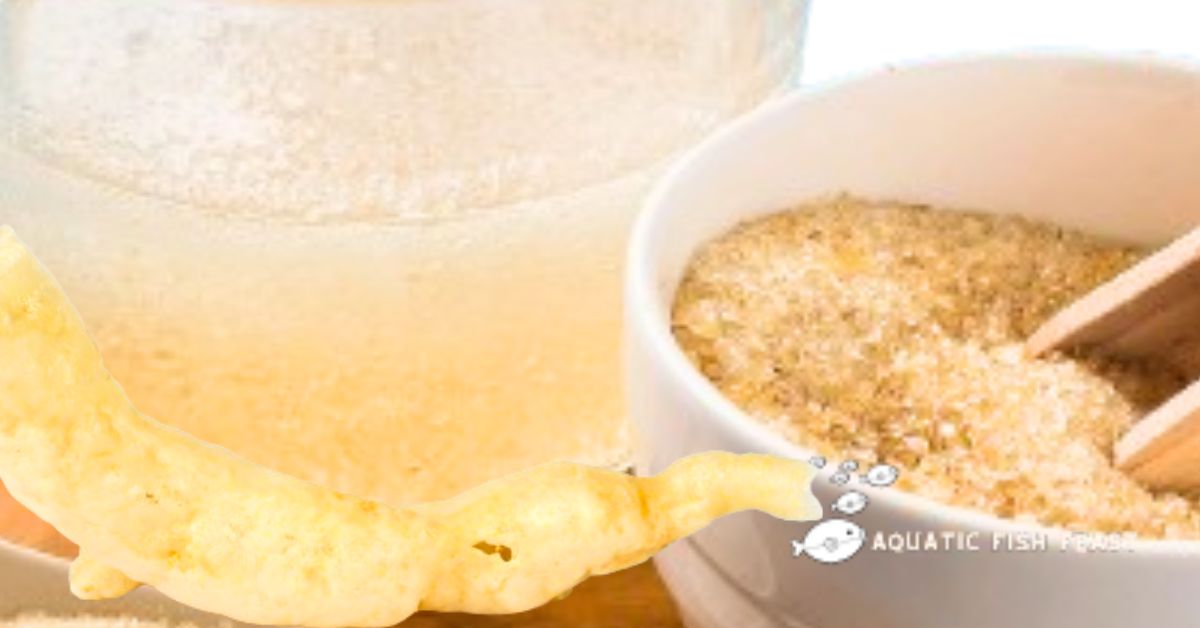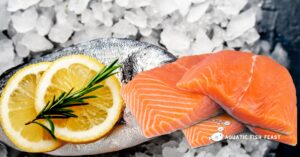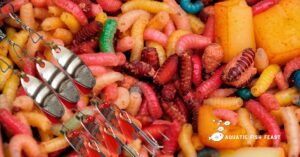Do you want to distinguish between maw and isinglass? Yes, I want to know the difference between maw and isinglass.
First, be aware that isinglass is another name for dried fish maws. There are still many differences between them, though.
You may learn more about the primary distinctions between fish maw and isinglass as you read on.
Now, let’s get started.
Table of Contents
What Is The Difference Between Fish Maw And Isinglass
Isinglass is made from fish maws (dried air bladder), soaked in water for 24 hours, washed and extruded, dried at 450 degrees Celsius, and then powdered. It is mainly used for wine clarifying.
Isinglass and fish maw are nearly identical. Isinglass is the dried product of fish mouth (the organ used by fish to control sinking and floating, also known as fish bubble, with gas within), rich in gelatin, thus the name isinglass.
So why is it termed different if it is the same thing? 1. Distinctions in naming practices. The name habit is caused by people’s long-term habituated name, flower maw, which is commonly the name of Hong Kong people.
Flower maw and pepper are two easily misunderstood terms. The two items have nothing in common. Fish maw is the dried product of the fish bladder, which is located in the fish’s belly.
It is a shaped, dried, and aged component. Isinglass is often written and referred to by the Chaoshan people.
The fish’s wings are shark fins, the fish’s head is the fish head, and the fish mouth glue of isinglass is known as isinglass.
Different areas use various naming practices. Even in the Pearl River Delta, many refer to fish mouth as maw. Of course, with isinglass expertise, these names are limitless.
Isinglass is a word that many people in the north and interior are unfamiliar with. Many people have heard of bird’s nest and sea cucumber, but not of isinglass.
However, Chinese people’s consumption of fish maw dates back more than a thousand years.
What Is Isinglass Suitable For
Commercially, isinglass is frequently used to clear alcoholic drinks by aggregating yeast and other insoluble particles.
It is obtained from tropical fish swim bladders by solubilization in organic acids and is mainly composed of the protein collagen.
Swim bladder dissolves quickly due to its low intermolecular cross-links, unlike bovine hide, which is cross-linked by a significant fraction of stable bonds and needs enzymatic digestion to dissolve.
Because isinglass is no longer valid as a clarifying agent after thermally denatured, the collagenous triple helical structure must be preserved.
Thermal denaturation of isinglass occurs at 29 degrees C, whereas mammalian collagens denaturate at 40-41 degrees C, owing to the reduced hydroxyproline concentration.
The hydroxyproline is required to produce H-bonded water bridges between the hydroxyl group and the peptide chain, which stabilizes the triple helix.
Based on the decreased enthalpy obtained by differential scanning calorimetry, we have computed that the thermally labile region of the isinglass molecule was 41 residues compared to 66 for mammalian collagen.
pH, chelating agents, detergents, and the removal of surface proteins from yeast cells had little effect on fining efficiency.
Higher molecular weight aggregates that enhance the length of the collagen molecules (trimers, tetramers, etc.) boost efficiency, and their surface charge is significant in the clarifying process, according to studies on the mechanism of action of isinglass.
What Is Isinglass Used For
The primary use for isinglass is in clarifying alcoholic beverages like wine and beer. It is made from the air bladder of fish such as carp and catfish. The quality of the isinglass produced in Russia is unparalleled anywhere else.
Isinglass has been manufactured and sold as a substance that may be used as a preservative in foods and drinks and in preserving parchments. Isinglass is no longer used in food since it is more expensive to produce than gelatin and other competitive goods. Gelatin has also taken its place.
The most common application for isinglass is in the clarification process for beer and wine. Finings made of isinglass are commonly used in alcoholic beverages because they hasten the process of removing sediments that have settled to the bottom of barrels (casks, etc.).
These beverages often contain just trace amounts of isinglass these days. Because isinglass is derived from fish, many vegetarians believe that beverages treated with isinglass finings should not be included in their diets.
In the United Kingdom, isinglass was employed to repair parchment and as a preservative for eggs during and before World War II. In addition, isinglass was used to preserve eggs.
However, the most common application of isinglass in today’s world is clearing alcoholic beverages like beer and wine. Other chemical applications have been phased out since cheaper substitutes are available.
What Is The Function Of Fish Maw
The inflated bladder that fish have that helps them manage their ascent and descent while submerging in water is called the “fish maw” in the culinary world.
Fish maws are highly prized in Chinese cuisine. Maw are regarded as a delicacy and so precious in China that individuals have been apprehended for smuggling them into the illegal fish maw market.
Even while the organ is present in all fish, bigger fish are the source of the fish maw most frequently utilized in Chinese cooking.
After being dried as part of the commercial preparation process, they must be rehydrated for a significant amount before being cooked, often for at least one full day.
Fish maw is primarily utilized for its texture and capacity to absorb flavor, although it has very little discernible taste.
Soups are the most popular preparation method for fish maw. Fish maw absorbs the spices and other flavors used in the soup while also contributing texture to the dish when it is cooked for a prolonged time, such as by simmering or braising.
They provide the soup with the health benefits connected with collagen due to their high amount of collagen, which in turn allows the soup to reap those benefits.
Final Thought
Now that we have established a distinction between maw and isinglass, you can understand clearly that Maw is the membrane lining of a fish’s mouth, whereas isinglass is a material generated from fish bladders commonly used to clarify liquids such as beer and wine.
Both are related to fish but serve different purposes—one is a part of the fish anatomy, while the other is a material obtained from fish for various purposes.




